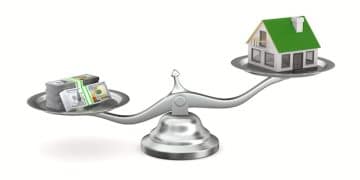Maximize Your 2025 Employee Benefits: HSA & 401(k) Guide

Maximize your employee benefits in 2025 by strategically utilizing Health Savings Accounts (HSAs) and 401(k)s to optimize healthcare savings, retirement planning, and tax advantages, ensuring a financially secure future.
Are you ready to take control of your financial future and make the most of your employee benefits? Understanding how to leverage your Health Savings Account (HSA) and 401(k) can significantly impact your healthcare savings and retirement planning. Let’s explore some strategies for maximizing your employee benefits in 2025: A guide to Health Savings Accounts (HSAs) and 401(k)s.
Understanding Health Savings Accounts (HSAs)
A Health Savings Account (HSA) is a tax-advantaged savings account that can be used for healthcare expenses. It’s an essential tool for those enrolled in a high-deductible health plan (HDHP). Let’s understand more about the advantages that it offers.
Eligibility for an HSA
To be eligible for an HSA, you must be enrolled in a high-deductible health plan (HDHP). This means your health insurance plan has a higher deductible than traditional plans. You also cannot be covered by any other non-HDHP health insurance, be enrolled in Medicare, or be claimed as a dependent on someone else’s tax return.
Tax Advantages of HSAs
One of the primary benefits of an HSA is its tax advantages. Contributions to an HSA are tax-deductible, the funds grow tax-free, and withdrawals for qualified medical expenses are tax-free. This “triple tax advantage” makes HSAs a powerful tool for long-term savings and healthcare planning.
- Tax-deductible contributions reduce your taxable income.
- Tax-free growth allows your savings to compound faster.
- Tax-free withdrawals for qualified medical expenses provide immediate financial relief.

Understanding these components of Health Savings Accounts can set the stage for how strategic planning can further boost your savings and overall financial stability.
Key Strategies for Maximizing Your HSA in 2025
Maximizing your HSA involves strategic planning and consistent contributions. Here’s how you can make the most of your HSA in 2025.
Contribute the Maximum Amount
The IRS sets annual contribution limits for HSAs. For 2025, make sure you are aware of these limits and aim to contribute the maximum amount if your budget allows. Catch-up contributions are also available for those aged 55 and older, providing an additional savings opportunity.
Invest Your HSA Funds
Many HSA providers allow you to invest a portion of your HSA funds in stocks, bonds, and mutual funds. By investing your HSA funds, you can potentially grow your savings at a faster rate than traditional savings accounts. Just be sure to consider your risk tolerance and investment timeline.
- Choose investments that align with your long-term financial goals.
- Diversify your investment portfolio to minimize risk.
- Rebalance your portfolio periodically to maintain your desired asset allocation.
By following these strategies, you can maximize the financial benefits of your HSA and secure your healthcare future.
Understanding 401(k) Plans
A 401(k) is a retirement savings plan sponsored by your employer. It allows you to save and invest a portion of your paycheck before taxes are taken out. It is another pillar of financial security and retirement planning. Here’s an in-depth look at 401(k) plans and several key aspects.
Types of 401(k) Plans
There are primarily two types of 401(k) plans: traditional and Roth. With a traditional 401(k), contributions are made pre-tax, and earnings grow tax-deferred. Taxes are paid upon withdrawal in retirement. With a Roth 401(k), contributions are made after-tax, but withdrawals in retirement are tax-free.
Employer Matching Contributions
One of the most significant benefits of a 401(k) is employer matching contributions. Many employers offer to match a certain percentage of your contributions, up to a specified limit. This is essentially free money that can significantly boost your retirement savings.

A solid understanding of 401(k)s can unlock numerous options for retirement so it is important to explore the different types as well as the employer matching contributions.
Strategies to Maximize Your 401(k) in 2025
To maximize your 401(k) in 2025, it is important to develop and implement well-thought-out strategies that align with your long-term financial goals. Let’s explore some strategies:
Take Advantage of Catch-Up Contributions
If you are aged 50 or older, you may be eligible to make catch-up contributions to your 401(k). This allows you to contribute more than the standard annual limit, helping you to accelerate your retirement savings.
Rebalance Your Portfolio Regularly
Over time, your asset allocation can drift away from your intended targets due to market fluctuations. Rebalancing your portfolio involves selling some assets and buying others to bring your portfolio back into alignment with your desired asset allocation which is essential to keep risks in check during your investment time.
- Establish a target asset allocation based on your risk tolerance and time horizon.
- Review your portfolio at least annually to assess any deviations from your target allocation.
- Rebalance your portfolio by selling overperforming assets and buying underperforming assets.
With that being said and done, let us get into how an HSA and 401(k) can work together in tandem to produce maximum results and security.
Integrating Your HSA and 401(k) for Optimal Benefits
Using an HSA and 401(k) together can create a powerful financial strategy. By coordinating these two accounts, you can optimize your savings, investments, and tax benefits.
Prioritize Contributions Based on Your Financial Goals
Consider your financial goals and time horizon when deciding how to allocate contributions between your HSA and 401(k). For example, if you have significant near-term healthcare expenses, prioritize HSA contributions. If retirement is your primary goal, focus on maximizing your 401(k) contributions, especially if your employer offers matching contributions.
Use Your HSA for Healthcare Expenses in Retirement
Your HSA can serve as a valuable source of funds for healthcare expenses in retirement. Unlike other retirement accounts, withdrawals from an HSA for qualified medical expenses are tax-free. This can help you manage healthcare costs without depleting your other retirement savings.
That provides how your accounts can act together and it is an essential thing to consider when thinking about retirement and your overall financial future. Planning is important to ensure a smooth road toward financial freedom.
Planning for Future Healthcare Costs and Retirement
Planning for future healthcare costs and retirement requires careful consideration of your current and future financial situation. Let’s explore some key strategies:
Estimate Your Future Healthcare Costs
Healthcare costs tend to increase over time, so it’s important to estimate your future healthcare expenses. Consider factors such as your age, health status, family history, and expected inflation rate. Use online calculators and consult with a financial advisor to develop a realistic estimate of your future healthcare costs.
Develop a Long-Term Financial Plan
A long-term financial plan can help you align your savings, investments, and insurance coverage with your retirement goals. Work with a financial advisor to create a comprehensive plan that addresses key areas such as retirement savings, healthcare planning, tax optimization, and estate planning.
- Set clear, measurable financial goals.
- Assess your current financial situation and identify any gaps.
- Develop strategies to achieve your goals while managing risk.
| Key Point | Brief Description |
|---|---|
| 💰 Maximize HSA Contributions | Contribute up to the annual limit to take full advantage of tax benefits. |
| 📊 Invest HSA Funds | Grow your HSA balance by investing in stocks, bonds, and mutual funds. |
| ✅ Employer Matching | Take advantage of any employer matching contributions to your 401(k). |
| 📅 Regular Rebalancing | Rebalance your portfolio regularly to maintain your desired asset allocation. |
Frequently Asked Questions
▼
A traditional 401(k) contributions are pre-tax, and withdrawals are taxed in retirement. A Roth 401(k) contributions are after-tax, but qualified withdrawals in retirement are tax-free.
▼
Yes, you can contribute to both an HSA and a 401(k) simultaneously, as long as you meet the eligibility requirements for each account. This can be a tax-efficient and smart way to set aside money for your future.
▼
Consider your risk tolerance, investment timeline, and financial goals when selecting HSA investments. Diversify your portfolio and rebalance it periodically to stay aligned with your objectives.
▼
Your HSA is yours to keep, even if you change jobs or health insurance plans. You can continue to use your HSA funds for qualified medical expenses, regardless of your employment status.
▼
A financial advisor can provide personalized guidance on optimizing your HSA and 401(k) contributions, investment strategies, and tax planning. They can help you develop a comprehensive financial plan tailored to your needs.
Conclusion
Maximizing your employee benefits in 2025 requires a strategic approach to both HSAs and 401(k)s. By understanding the benefits of each account, implementing effective strategies, and coordinating your contributions, you can secure your financial future and achieve your retirement goals.





